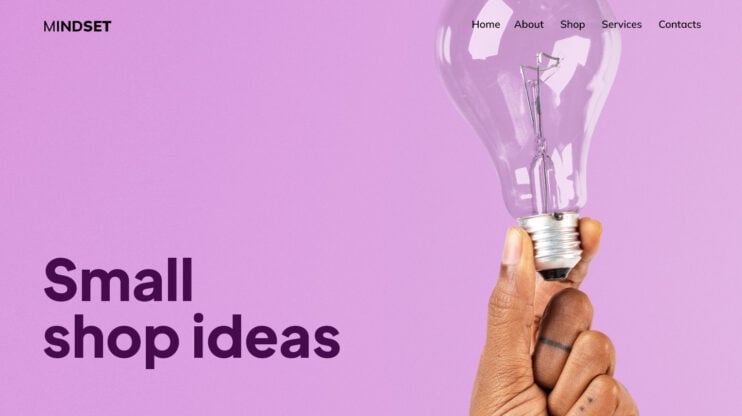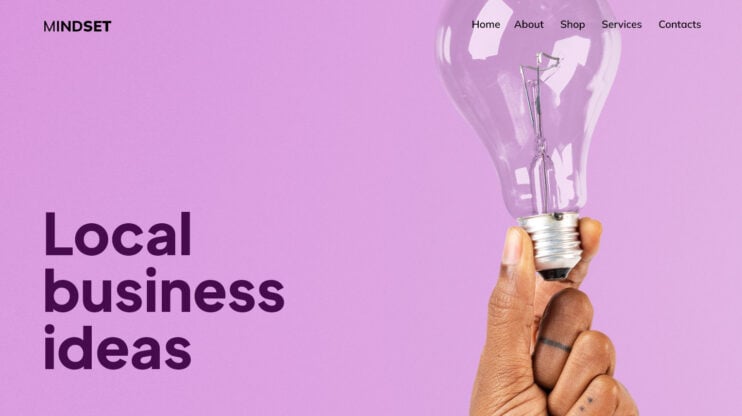Before launching a business, testing your idea will ensure its success in the market. This article discusses practical steps to validate a business idea, including market research, prototyping, competitor analysis, and gathering customer feedback.
Testing your business ideas offers an opportunity to identify potential challenges early, refine your product, and create a clear market advantage. By taking the time to validate your concept, you increase the chances of building a business that resonates with customers and stands out in the competition.
FAQ
How do you test a business idea?
How do I validate a business idea?
What is business idea assessment?
How do I test my product idea?
How to test demand for a business idea?
How to test your business ideas?
Business idea testing helps you figure out if it’ll work. Many aspiring entrepreneurs skip this step, only to realize later that their concept might need to be more solid. By following a structured process, you can gather valuable insights that will help shape and improve your business concept, increasing your chances of long-term success.
Here are some essential steps to help you effectively test your business idea.
Develop your business idea
Coming up with a good business idea takes creativity and careful testing. You need to think of new ways to solve problems while making sure your idea can work in the real world. Here is a quick breakdown of steps you can take:
- Start by looking for problems that need solving. What frustrates you or others in daily life? What tasks could be made easier? Write down any ideas that come to mind, even if they seem silly at first.
- Think about combining existing products or services in new ways. Look at trends in technology, society, and business for inspiration.
- Brainstorm with others to spark new ideas. Set a timer for 10 minutes and write down as many ideas as you can without judging them.
- Having all of the ideas, you can pick the most promising ones to develop further.
Create a business plan
A business plan helps you map out your startup’s path. It outlines your goals and how you’ll reach them. It also shows how much money you’ll need to get started.
Outlining business goals
With your business idea ready, you should start outlining your goals. The business plan should list clear goals for your startup. Think about what you want to achieve in the next 1-3 years. Set targets for sales, customers, and growth. Make these goals specific and measurable.
For example:
- Reach $100,000 in sales by the end of year 1.
- Get 1,000 paying customers in the first 6 months.
- Open 2 new locations by year 3.
Break big goals into smaller steps. This makes them easier to track. Update your goals as your business grows and changes.
Financial requirements
Figure out how much money you need to start your business. Make a list of all startup costs. This includes things like equipment and supplies, office or retail space rent, licenses and permits, employee wages, and marketing expenses.
Add up these costs to get your total startup capital needs. Then add extra for unexpected expenses. A good rule is to add 20% more to your estimate.
Look at business funding options to get this money. You might use:
- Personal savings
- Loans from banks or family
- Investors
- Crowdfunding
Pick the options that work best for your situation. Having a clear funding plan helps your startup succeed.
Understand your target market
Knowing who will buy your product or service is key to testing your business idea. You need to learn about potential customers and how big the market is. This helps you make smart choices as you develop your business.
Conduct market research
Market research gives you important details about your target customers. You can use surveys, focus groups, and online data to learn what people want. Look at what your competitors are doing too. This shows you what’s already out there and how you can be different.
Check social media to see what people are saying about similar products. Look at review sites to find common complaints. These can give you ideas for how to improve on what’s available.
Try talking to people in person as well. Go to places where your target customers hang out. Ask them questions about their needs and preferences.
Analyze the market size and share
Knowing the size of your market helps you plan better. You want to make sure there are enough potential buyers for your product. Look for industry reports that give sales numbers for your type of business.
To figure out market share, see how many competitors you have. Look at their sales if that info is available. This tells you how much of the market you might be able to get.
You can also check search volume for keywords related to your product. This shows how many people are looking for what you want to sell. Use tools like Google Trends to see if interest is growing or shrinking over time.
Identify your target customers
Create buyer personas to represent your ideal customers. These are made-up profiles based on real data about who might buy from you. Buyer personas usually include things like:
- Age
- Gender
- Income
- Job
- Hobbies
- Pain points your product can solve
Look at who buys from your competitors. This can give you clues about your target customers. Pay attention to trends that might change who your customers are in the future. Test your ideas by talking to people who fit your target customer profile. Ask if they would use your product and why or why not. Their feedback can help you make your business idea better.
Create a strong value proposition
Your unique value proposition sets you apart from competitors. It should be clear and specific about what makes your offering special. Think about what you do better or differently than others. Focus on the key benefits that matter most to your target customers.
For example, a meal delivery service might highlight “Fresh, chef-prepared meals delivered to your door in 30 minutes or less.” This tells customers exactly what they’ll get and why it’s valuable.
Test different versions of your value proposition with real customers. Ask them which one grabs their attention and makes them want to learn more. Use their feedback to improve your message.
What makes a good value proposition?
A good value proposition speaks directly to customer needs and pain points. It shows you understand their problems and have a solution. Here is how to achieve this:
- Start by talking to potential customers about their challenges.
- Learn what frustrates them about current options in the market.
- Then, explain how your product or service fixes those issues.
- Be specific about the results customers can expect. For instance, a project management tool might say Cut meeting time in half and boost team productivity by 25%.
Backing up your claims with real data when possible will build trust and show customers you can deliver on your promises.
Prototyping and MVP development
Prototypes and MVPs help test business ideas before full product launches. They let you gather feedback early and make smart choices about what to build.
Design thinking approach
Design thinking puts users first when creating products.
- Start with learning about customer needs. You can use surveys, interviews, and watching how people work to spot problems.
- Brainstorm many possible solutions. Sketch out your ideas on paper or whiteboards. Don’t judge ideas yet – just get them all out.
- Then pick the most promising ideas to prototype. Build quick, rough versions to test key features. These might be paper sketches, digital mockups, or simple working models.
- Test prototypes with real users. See how they react and what confuses them. Use their feedback to improve your designs.

Building an early version of the product
An MVP is a basic version of your product with just the core features. It lets real customers try it out. To build an MVP:
- List your product’s must-have features
- Cut out anything extra
- Choose the quickest way to build those key features
- Launch it to a small group of users
Keep the MVP simple. You want to test your main idea, not perfect every detail. Collect data on how people use the MVP. Talk to users to learn what works and what doesn’t. Use these insights to plan your next steps.
Validating the product idea
Testing a product idea helps make sure it works well and people like it. This step is key before spending a lot of time and money on making the full product.
Conduct alpha and beta testing
Alpha testing happens early on with a small group inside the company. The goal is to find and fix big problems. You can use a basic version of the product for this test and keep track of any issues that come up.
Beta testing comes next. You give the product to a larger group of people outside the company. These testers use it like they would in real life. They report bugs and share what they think. This helps you see how well the product works for real users.
During both tests, watch how people use the product. Look for parts that confuse them or cause trouble. Make changes based on what you learn.
Gather customer feedback
Getting input from customers is a big part of testing your idea. You can use surveys, interviews, or focus groups to learn what people think. Ask about the product’s features, price, and how well it solves their problems.
Pay attention to negative feedback. It helps you find weak spots in your idea. Look for patterns in what people say. If many users point out the same issue, it’s likely important to fix it.
Try to get feedback from different types of customers. This gives you a fuller picture of how your product might do in the market. Use what you learn to make your product better before you launch it.
Looking to sell online? Develop and launch your store with 10Web AI Ecommerce Website Builder.
Create your online store in minutes!
Assessing business idea sustainability
Checking if your business idea can last long-term is key. You need to look at money and market fit over time.
Long-term profitability analysis
To see if your idea can make money long-term, start with some math. Make a list of all costs to run the business. This includes things like rent, supplies, and workers. Then guess how much you’ll sell and for what price. Subtract the costs from sales to see if you’ll have profit.
Look at these numbers for a few years out. Will sales grow? Do costs stay the same? Make charts to see trends. This helps spot issues early.
Don’t forget to check if you need big money upfront. Some ideas need lots of cash at first. Plan how you’ll get that money and pay it back.
Ongoing market fit evaluation
Your idea needs to keep matching what people want. Set up ways to get feedback often. You can use surveys, social media, or talking to customers. Listen to what they say about your product.
Watch for new trends or tech that could change your market. Your idea may need to shift over time. Have a plan to test new versions of your product.
Keep an eye on your competitors too. Are they doing things that customers like better? You might need to change to keep up. Stay flexible and ready to improve your business idea as the market changes.
Conclusion
Business idea testing is the process of assessing whether your concept is viable in the real world before fully committing to its launch. It involves crucial steps like market research, prototyping, analyzing competitors, and gathering customer feedback to refine and improve your idea. This article provides practical guidance on how to develop your idea, create a business plan, identify your target market, and test the product through prototypes and MVPs.
With all the steps mentioned in this article, you’ll be able to uncover potential challenges, enhance your product, and ensure it aligns with customer needs. Ultimately, this structured approach helps you build a stronger foundation for your business, reducing risk and increasing your chances of success in a competitive market.
Looking to sell online? Develop and launch your store with 10Web AI Ecommerce Website Builder.
Create your online store in minutes!











